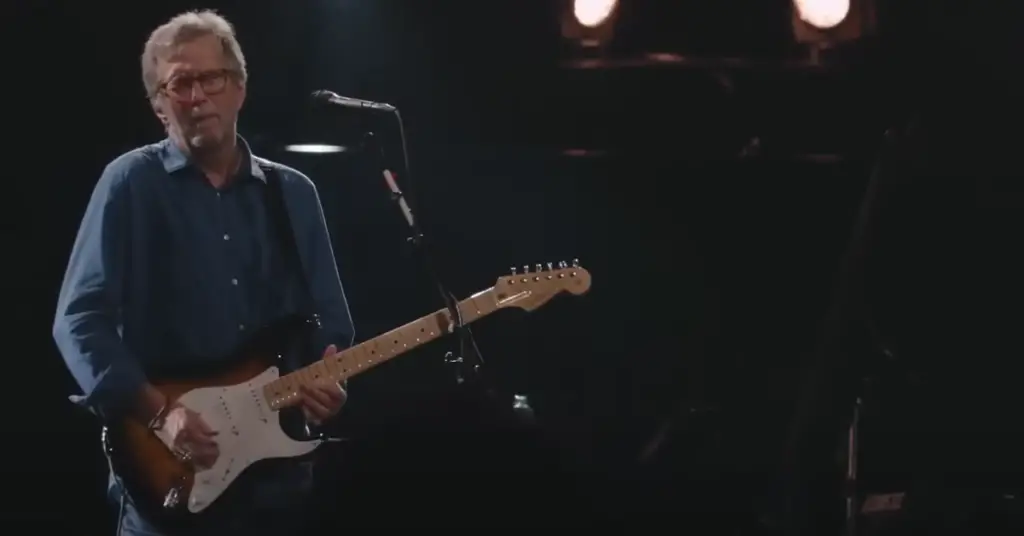Eric Clapton – “Cocaine”: The Riff That Won’t Quit and the Message Beneath the Surface
When Eric Clapton released “Cocaine” in 1977 on his Slowhand album, he gave the world one of the most instantly recognizable riffs in rock history. With its low-slung swagger and heavy-lidded cool, the song became a staple of late-night playlists, barroom jukeboxes, and arena stages.
But behind the slow-burning groove and deceptively simple lyrics lies a track that’s both widely celebrated and widely misunderstood—a song that’s sparked debates for decades, not just about sound, but about meaning.
So let’s strip it down: “Cocaine” isn’t just a jam. It’s a warning dressed in denim and shades.
The Origin: From Tulsa to the World
“Cocaine” was originally written and recorded by J.J. Cale, the Oklahoma master of laid-back blues-rock. Cale’s version, released in 1976, is more relaxed and murky—almost a whisper compared to Clapton’s sharper rendition.
Clapton, a longtime admirer of Cale’s minimalist genius, decided to cover the track and give it his own edge. With his signature Stratocaster tone and crisp delivery, Clapton turned Cale’s slow-burn into a radio-ready monster—and it worked.
“Cocaine” quickly became a fan favorite and a live powerhouse, showing off Clapton’s ability to groove deeply without ever losing his cool.
The Sound: Sleek, Dark, and Deceptively Simple
From the moment the opening riff kicks in, “Cocaine” oozes attitude. The rhythm section is tight and funky, the guitar tone is clean but menacing, and Clapton’s voice is laid-back, almost detached.
“If you wanna hang out, you’ve gotta take her out—cocaine.”
It’s a line that has made people both sing along and raise eyebrows. But the music—mid-tempo, punchy, hypnotic—keeps rolling like a blacked-out Cadillac down a moonlit highway.
Despite the song’s simplicity—musically just a handful of chords—it builds a moody, unforgettable atmosphere. The repetition is part of the spell. It doesn’t dazzle with technique; it pulls you in with feel.
The Message: Is It Pro-Drug? Not Quite.
For decades, listeners have debated the meaning behind the lyrics. On the surface, “Cocaine” sounds like a straightforward drug anthem. But Clapton has consistently said that the song is actually anti-drug—a critique, not a celebration.
He’s gone so far as to say that if people didn’t get the message, he would perform the song with a line added to the chorus:
“That dirty cocaine.”
The lyrics highlight a lifestyle of indulgence, dependency, and illusion. Lines like:
“She don’t lie, she don’t lie, she don’t lie—cocaine.”
…carry a sinister irony. Of course cocaine lies. Of course it seduces. The song mirrors the high—it sounds good, it feels good—but it’s hollow. Clapton’s detached delivery isn’t glorification—it’s critique.

Legacy: A Controversial Classic That Endures
Whether seen as a cautionary tale or a misunderstood anthem, “Cocaine” has become a defining Clapton track, performed live thousands of times and covered by countless artists. It remains one of his most requested songs and one of the standout moments in Slowhand, an album packed with gems like “Wonderful Tonight” and “Lay Down Sally.”
Over time, the song has taken on new shades. For some, it’s nostalgia. For others, a snapshot of an era. For musicians, it’s a masterclass in restraint, groove, and tone.
Final Thoughts
“Cocaine” is a paradox—musically irresistible, morally murky, and endlessly replayable.
It’s a riff you can’t shake, and a message you might miss if you’re not listening close.
It asks a question with every chorus:
Are you chasing the high—or warning others about the fall?
And in true Clapton fashion, it leaves the answer just vague enough to keep you thinking.
Thank You
We appreciate your time and dedication to reading our article. For more of the finest blues guitar music, make sure to follow our Facebook page, “I Love Blues Guitar”. We share exceptional selections every day. Thank you once again for your continued support and readership.


Facebook Comments